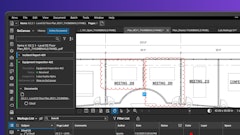
After a banner 2019 in construction, 2020 brought the construction industry the same gift it brought to all of us — uncertainty, according to the Quarterly Construction Metrics Index, released by Viewpoint, a provider of integrated construction accounting and project management software and solutions. Hiring was down 30% year-over-year, pending projects stayed well below average throughout the spring and summer and contract values ended the year down by 25%.
The Q1 Index was aggregated from anonymized, real-time data entered into Viewpoint’s construction management suite, with a focus on data inputted during the fourth quarter of 2020 and examined year-over-year. Sourced from roughly 1,000 Viewpoint customers who collectively managed over $4 billion dollars worth of construction projects in 2020, it examined data related to job creation, project stats, contract values and other notable data points.
Hiring Trends
“Overall construction employment in 2020 was marked by a sharp decline in March when the pandemic first hit, followed by an increase in hiring in the second and third quarter, which is typical for the spring/summer months when many construction projects begin breaking ground,” noted index author Anne Hunt, director of data and analytics at Viewpoint. “However, the employment rebound was still far below the net hiring averages seen during the same time of year in 2019.”
Key findings show:
- Hiring was down 30% year over year; however, 2019 was a banner year for the industry with hiring up 13% as compared to 2018.
- 2020’s fourth quarter saw even steeper hiring declines, particularly for heavy highway (-1%) and general contractors (-2.5%).
- Specialty contractors maintained net positive employment throughout 2020, including in the fourth quarter (+0.7%). This could be attributed to their ability to do projects backlogged by general contractors and/or routine service/maintenance work.
- While the average industry employee tenure is about 4.1 years, heavy highway employees averaged 5.2 years; specialty contractor employees averaged 4.4 years; and general contractor employees averaged 3.5 years.
Hiring differed by region depending on when the pandemic surged throughout the U.S. The Northeast saw a sharp decline in March, but rebounded over the rest of the year as the region adapted to the pandemic and it spread to other parts of the country. Most of the rest of the country experienced negative hiring growth through most of 2020 as the pandemic disrupted business, particularly in the Plains, Midwest and Southeast regions. All except the Northeast showed negative net hiring in the fourth quarter.
Project Trends
“Pending projects, which is when a project is logged in the system but not yet completed, were down throughout the year, even in Q1 2020 before the pandemic hit the U.S.,” noted Hunt. “Pending projects usually rebound in the spring and early fall, but stayed well below average in 2020 as contractors held back on starting new projects due to the pandemic and the uncertainty of the business climate.”
This trend continued into the third and fourth quarter, which saw lower than average pending and closed projects, equating to a year-over-year decline of 31%. However, overall projects were down just 5% vs. 2019. In contrast, 2019 saw a 16% increase in projects over 2018.
For all three verticals, year-over-year pending projects declined:
- Specialty contractors: -38%
- General contractors: -30%
- Heavy highway: -25%
Contract Value Trends
“Overall, contract values were down year-over-year by 25%, which coincides with the declines seen in hiring trends and project starts,” Hunt reported.
The decline in contract values affected all three verticals. However, general contractors saw the largest drop in the fourth quarter (-50%), equating to a year-over-year decline of 36%. Heavy highway contract values were down 15% in Q4, for a year-over-year decline of 30%. Specialty contract values were down 18% for the fourth quarter and 18% year-over year.
Viewpoint will release a Quarterly Construction Metrics Index along with an associated webinar immediately following each subsequent quarter in 2021.
Information provided by Viewpoint and edited by Becky Schultz.



















